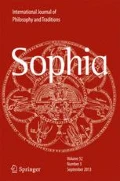Multiplicities and Contingency: Rethinking 'Popular Buddhism', Religious Practices and Ontologies in Thailand
Publication Description
This paper reconsiders explanations of ‘popular’ Buddhism in Thailand initiated in midtwentieth century anthropological definitions of vernacular articulations of religiosity in village settings. Buddhist localism, in its various manifestations, is seen to contrast with a doctrinal or literate ‘great’ monastic tradition. In this persisting ethnographic argument, an actor may draw randomly on various syncretic elements of their religiosity according to circumstances (an historical complexity which is sourced in a mix of Sinhalese-sourced Buddhism, animism including magic, and folk Brahmanism). It is therefore not wholly or consistently one, but substantively divided into several strands. This long-standing position is problematic as the paper shows. There are multiple coextensive Buddhism/s (plural) within the Greater Theravada tradition, which emerge from an identification of the actors themselves with the one, not the many, as one-unitary-Buddhists. I theorise using a general framework of Meillassoux’s discussion on contingency and, by way of contrast, taking Deleuzian ideas on multiplicity. It is grounded on an understanding of popular or organic lived religion sourced in the early counter-enlightenment or radical enlightenment thinking of Giambattista Vico. Here, it is argued that in Thailand villagers would identify cosmologically as the one, not as the many (in a sense as in the assemblages or varieties of religious practices detached from the totality of the cosmological unitary one). Understanding
the creative processes behind cosmological multiplicities is a starting point, with the notion that within specific cultural forms we are faced with a multiplicity of definitions and things to observe, as in an understanding of the varieties of lived Buddhism. The essay is based on an ethnographic assessment from over three decades of field research among ethnic Thai Buddhists at various modalities and settings, and in framing these vernacular religious practices and their ontologies. My gratitude to two anonymous reviewers for their constructive comments. The essay does not deal directly with specific ethnographic case studies; instead, it is intended as retheorising representations of ‘Popular Buddhism’ in Thailand as based on early scholarship since the 1960s (where Buddhism is constituted as three or more distinctive but intertwined religious strands).

